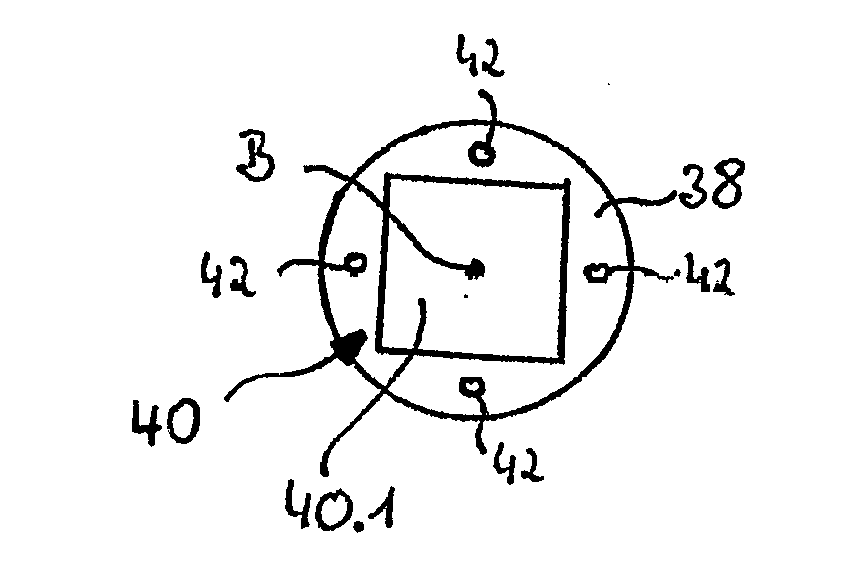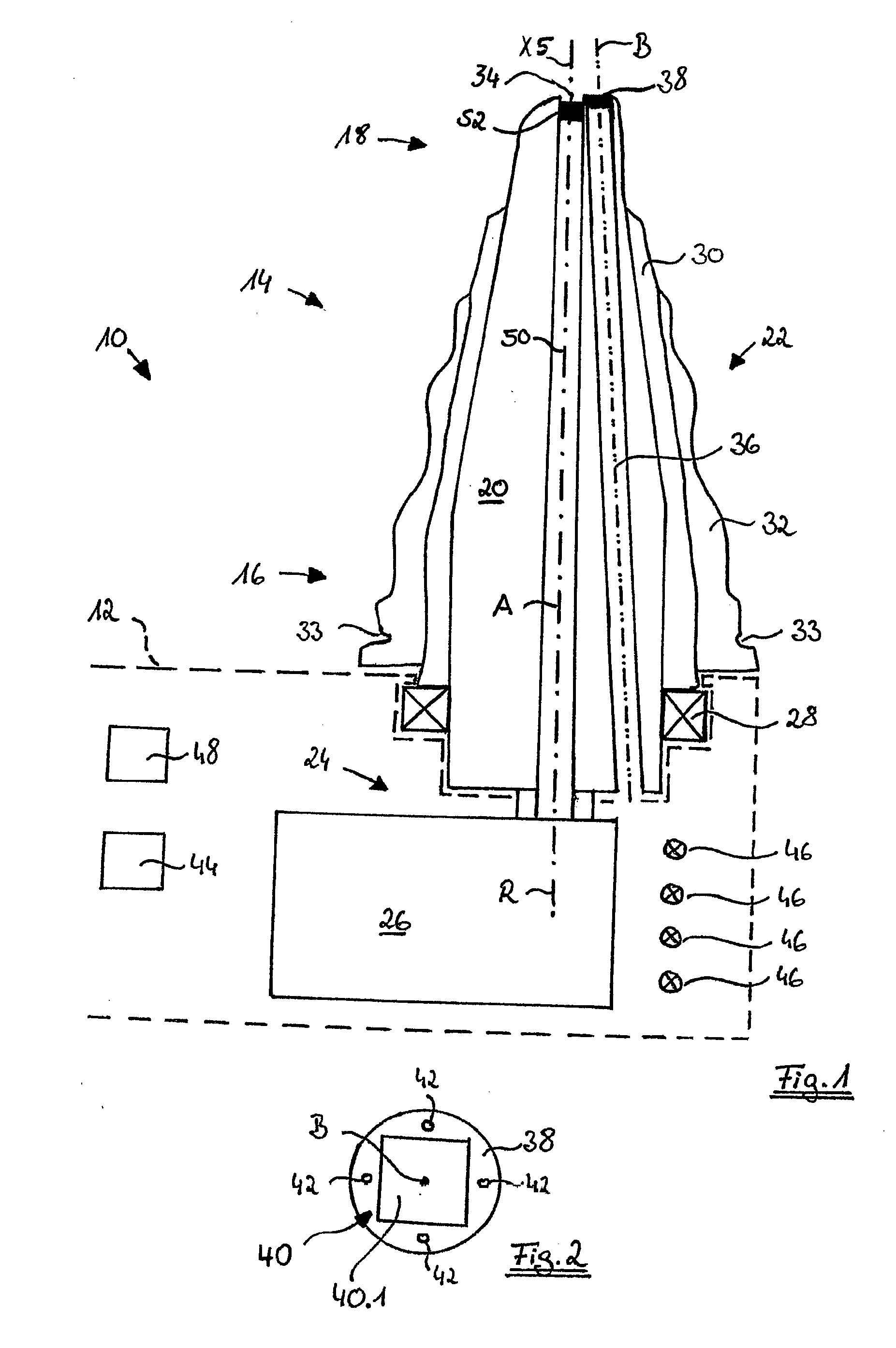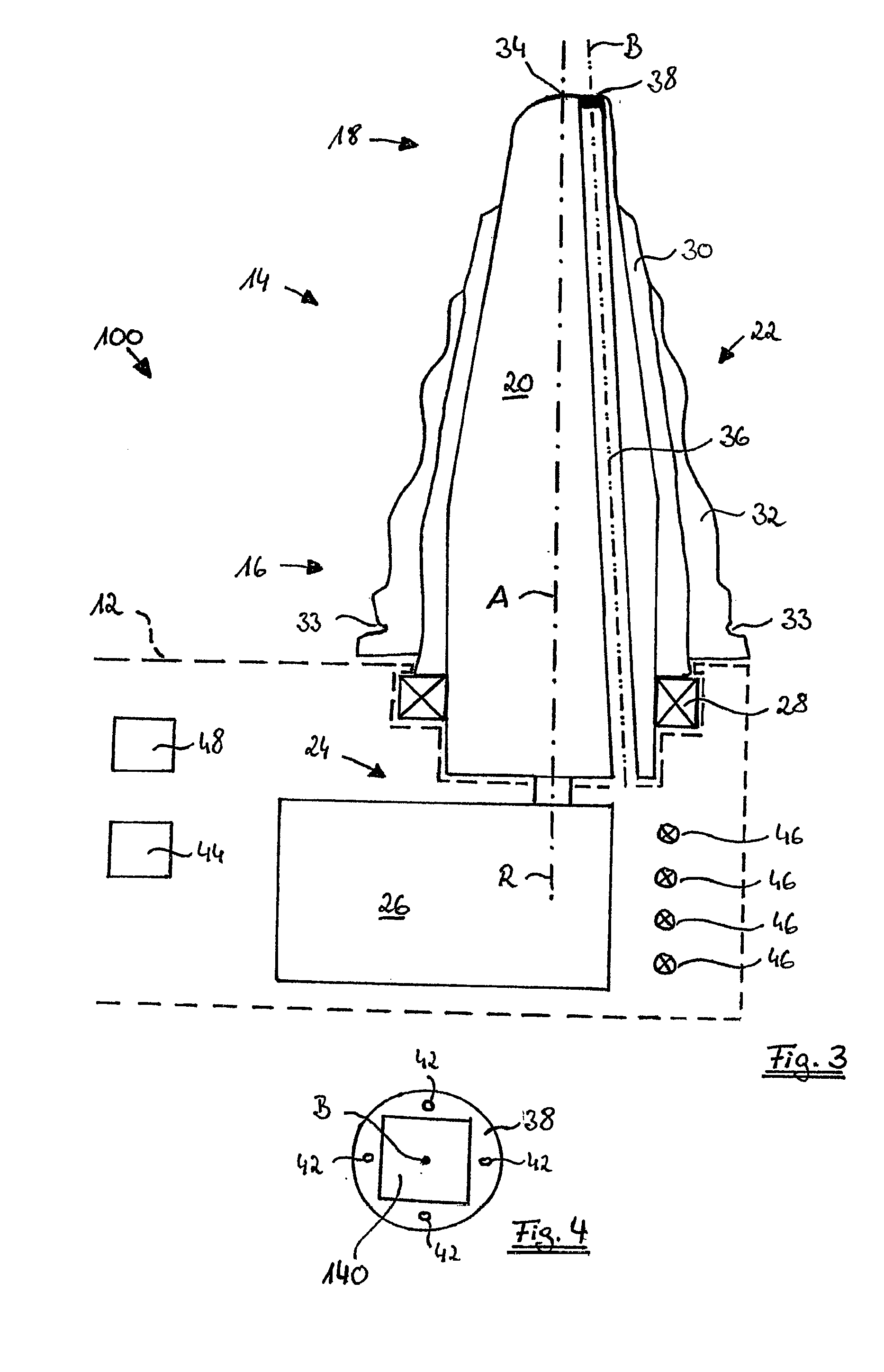Ear inspection device and method of determining a condition of a subject's ear
a technology of ear inspection and eardrum, which is applied in the field of ear inspection devices and methods of determining the condition of a subject's ear, can solve the problems of radial offset of optical axis or visual axis, he or she may be informed, and the eardrum of the ear may be inflamed
- Summary
- Abstract
- Description
- Claims
- Application Information
AI Technical Summary
Benefits of technology
Problems solved by technology
Method used
Image
Examples
Embodiment Construction
[0155]FIG. 1 schematically shows a cross-sectional view of a head portion 14 and a part of a handle portion 12 (only shown in phantom lines) of a first embodiment of an ear inspection device 10 according to the present invention. As can be seen from FIG. 1, the head portion 14 has a substantially tapering form extending along a longitudinal axis A of the head portion 14. The head portion 14 comprises a relatively large proximal end 16 adjacent to the handle portion 12 and a smaller distal end 18. The distal end 18 of the head portion 14 is adapted to be introduced into a subject's ear canal.
[0156]Furthermore, the head portion 14 comprises a rotatable, radial inner portion 20 and a fixed, radial exterior portion 22. The rotatable portion 20 is rotatable about an axis of rotation R which—in the shown exemplary embodiment—corresponds to the longitudinal axis A of the head portion 14. A motion mechanism 24 comprising a servo motor 26 is positioned within the handle portion 12 and is cou...
PUM
 Login to View More
Login to View More Abstract
Description
Claims
Application Information
 Login to View More
Login to View More - R&D
- Intellectual Property
- Life Sciences
- Materials
- Tech Scout
- Unparalleled Data Quality
- Higher Quality Content
- 60% Fewer Hallucinations
Browse by: Latest US Patents, China's latest patents, Technical Efficacy Thesaurus, Application Domain, Technology Topic, Popular Technical Reports.
© 2025 PatSnap. All rights reserved.Legal|Privacy policy|Modern Slavery Act Transparency Statement|Sitemap|About US| Contact US: help@patsnap.com



